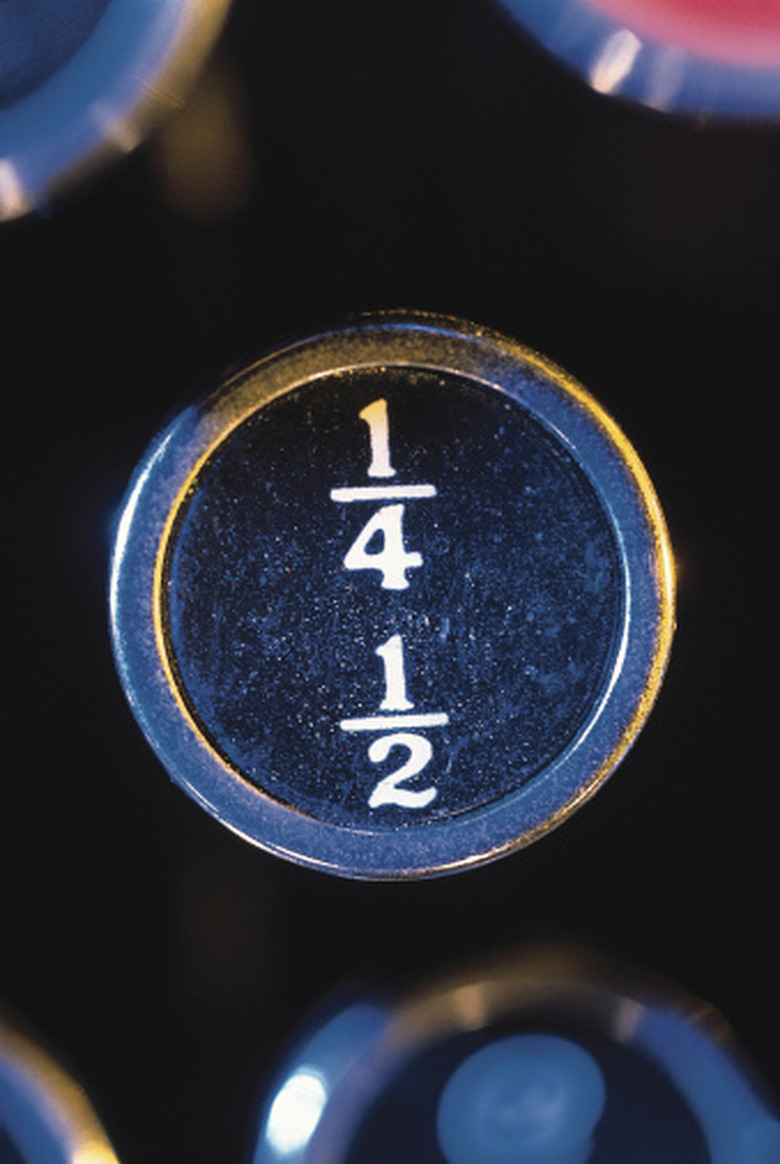How To Know When One Fraction Is Larger Than Another Fraction
When students take math exams, they need to know when one fraction is greater than another one. This is especially true in a subtraction problem when the smaller fraction needs to be subtracted from the larger fraction. Gauging fractions also comes in handy when several fractions must be placed from the least to the greatest or from the largest to the smallest.
Step 1
Choose a couple of fractions to work with. For example, consider 6/11 and 5/9. Take the denominator of the second fraction, 9, and multiply it by the numerator of the first fraction, 6. The product is 54. Write this number above the first fraction.
Step 2
Take the denominator of the first fraction, 11, and multiply it by the numerator of the second fraction, 5. The product is 55. Write that number above the second fraction.
Step 3
Compare the numbers you have written above the fractions. Because 55 is larger than 54, the second fraction, 5/9, is larger than the first fraction, 6/11.
Step 4
Apply this technique to any two fractions A/B and C/D, such that A, B, C and D are whole numbers, each greater than zero. If the product of A x D is greater than the product of C x B, the fraction A/B is larger than C/D. Similarly, if the product of A x D is less than the product of C x B, the fraction A/B is smaller than the fraction C/D.
TL;DR (Too Long; Didn't Read)
Another way to illustrate this is to find the common denominator of the two fractions. In the case of 6/11 and 5/9, the common denominator is 99 (9 x 11). Multiply the numerator and denominator of 6/11 by 9 to get 54/99, and multiply the numerator and denominator of 5/9 by 11 to get 55/99. This shows that 55/99, or 5/9, is greater than 54/99, or 6/11.
Cite This Article
MLA
Contributor, . "How To Know When One Fraction Is Larger Than Another Fraction" sciencing.com, https://www.sciencing.com/one-fraction-larger-another-fraction-2320868/. 24 April 2017.
APA
Contributor, . (2017, April 24). How To Know When One Fraction Is Larger Than Another Fraction. sciencing.com. Retrieved from https://www.sciencing.com/one-fraction-larger-another-fraction-2320868/
Chicago
Contributor, . How To Know When One Fraction Is Larger Than Another Fraction last modified March 24, 2022. https://www.sciencing.com/one-fraction-larger-another-fraction-2320868/
